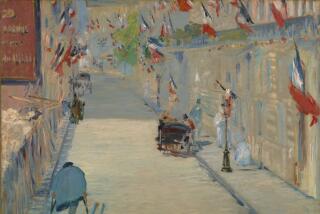Creative spirits
Innumerable literary giants have wielded brush and ink to great effect, Donald Friedman shows in “The Writer’s Brush” (Mid-List Press: 458 pp., $40), a lush collection of images by more than 200 writers, from Apollinaire to Yeats.
Joseph Conrad sketched women in erotic poses. Antoine de Saint-Exupery worked out his stories in drawings. Henry Miller gave in to “the treat of painting” every day before dinner. And e.e. cummings painted for “exactly the same reason as I breathe.”
Some (Sherwood Anderson, J.P. Donleavy, Sylvia Plath, Ralph Steadman) channeled their creative spirit visually first; others used blank canvas to unleash the writerly imagination. “In the Beginning / wasn’t the Word / since we name an image / after we see it,” poet Lawrence Ferlinghetti wrote in “A Far Rockaway of the Heart.” Fellow Beat Allen Ginsberg had no illusions about his skill: “If you’re famous, you can get away with anything!”
But in William Blake, poetry and painting merged. Blake, writes Friedman, “saw art in all forms as prayer . . . as inseparable from life, and all life as God.”
-- Kristina Lindgren
More to Read
Sign up for our Book Club newsletter
Get the latest news, events and more from the Los Angeles Times Book Club, and help us get L.A. reading and talking.
You may occasionally receive promotional content from the Los Angeles Times.






